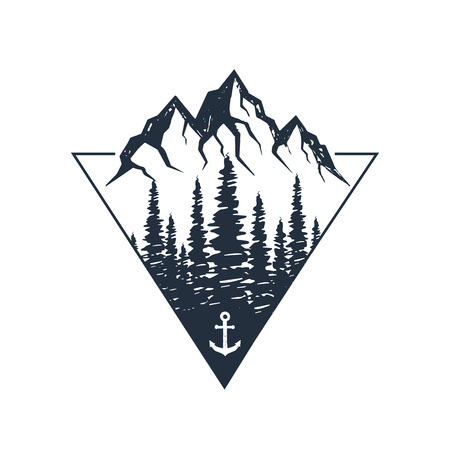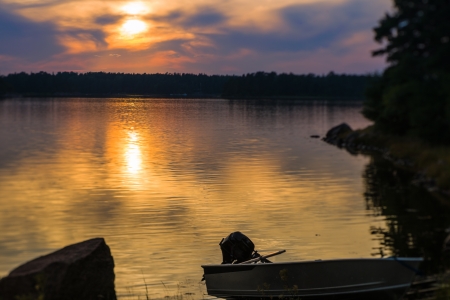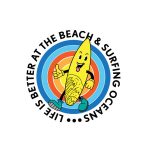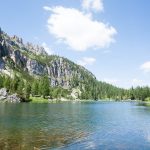Introduction to Fishing in Americas National Parks
Fishing in the United States isnt just a hobby—its a way to connect with nature, unwind from the daily grind, and experience the great outdoors like never before. Across the country, Americas national parks offer some of the most legendary fishing adventures you can imagine. Whether youre casting a fly in a crystal-clear mountain stream or dropping a line into a tranquil alpine lake, these protected lands are home to thriving fish populations and jaw-dropping scenery that make every trip unforgettable.
What makes fishing in national parks so special is the combination of pristine waters, diverse ecosystems, and breathtaking landscapes. These parks protect not only incredible natural beauty but also well-managed fisheries that provide anglers with quality experiences year-round. From the rugged rivers of Alaska’s backcountry to the serene lakes of the Great Smoky Mountains, each park brings its own unique charm and challenge for anglers of all skill levels.
In this series, we’ll take you through some of the top national parks across the U.S. that offer legendary fishing opportunities. Whether youre after trout, bass, salmon, or something more exotic, theres a perfect spot waiting for you. To give you an idea of what to expect, heres a quick look at what some popular parks have to offer:
| National Park | Main Fish Species | Best Time to Fish | Fishing Highlights |
|---|---|---|---|
| Yellowstone National Park | Cutthroat Trout, Rainbow Trout | June – September | Fly fishing in iconic rivers like the Yellowstone and Madison |
| Great Smoky Mountains National Park | Brook Trout, Rainbow Trout | March – October | Backcountry stream fishing surrounded by lush forests |
| Everglades National Park | Largemouth Bass, Snook, Tarpon | November – March | Unique freshwater and saltwater mix for diverse catches |
| Glacier National Park | Bull Trout, Lake Trout | July – September | Remote alpine lakes with scenic mountain views |
| Kings Canyon & Sequoia National Parks | Golden Trout, Rainbow Trout | June – August | High-elevation streams and lakes with peaceful surroundings |
No matter where your adventure takes you, fishing in America’s national parks delivers more than just fish—it offers unforgettable moments surrounded by nature at its finest. So grab your gear and get ready to explore some of the best angling spots the U.S. has to offer.
2. Yellowstone National Park – Trout Haven of the West
Yellowstone National Park isnt just famous for its geysers and wildlife — its also one of the best fly fishing destinations in the United States. Anglers from all over the world come here to chase legendary trout species in some of Americas most iconic rivers. If youre dreaming of casting a line surrounded by breathtaking scenery, Yellowstone is the place to be.
Why Yellowstone is a Fly Fishing Paradise
Yellowstone offers an incredible variety of waters to fish, from high mountain streams to broad, meandering rivers. What makes it truly special is the abundance and diversity of trout species. Whether youre a seasoned angler or just getting started, theres something magical about wading into these historic waters with your fly rod in hand.
Top Trout Species Found in Yellowstone
| Trout Species | Where to Find Them |
|---|---|
| Cutthroat Trout | Yellowstone River, Lamar River |
| Brown Trout | Madison River, Gardner River |
| Rainbow Trout | Firehole River, Gibbon River |
| Brook Trout | Soda Butte Creek, upper tributaries |
Iconic Rivers Worth Exploring
- Firehole River: Known for its warm water temperatures and unique geothermal features. Great early-season fishing spot.
- Madison River: A favorite among fly anglers, especially during fall when big brown trout move upstream.
- Lamar River: Offers scenic beauty and excellent dry fly opportunities for native cutthroat trout.
Fishing Tips for First-Time Visitors
If youre new to fishing in Yellowstone, here are a few tips to make your trip more enjoyable:
- Get a permit: A Yellowstone National Park fishing permit is required — you can purchase one online or at park visitor centers.
- Follow regulations: The park has specific rules to protect native fish species, including catch-and-release policies on certain waters.
- Hire a guide: Consider booking a local guide if you want to learn faster and find the best spots.
No matter where you choose to fish in Yellowstone, youre guaranteed an unforgettable experience surrounded by natures finest. Between the trophy-sized trout and the stunning views, its easy to see why this park is considered a fly fishing legend.

3. Everglades National Park – Exotic Angling in the Mangroves
Welcome to one of America’s most unique and untamed fishing destinations — Everglades National Park. Located in southern Florida, this massive subtropical wilderness offers anglers an incredible opportunity to fish in a maze of mangrove tunnels, freshwater sloughs, and brackish estuaries. Whether youre casting from a kayak or exploring by flats boat, the Everglades delivers unforgettable action with some of the most sought-after gamefish in the country.
Why Fish the Everglades?
The park’s diverse ecosystem supports a wide range of fish species, making it ideal for both saltwater and freshwater fishing adventures. What makes the Everglades stand out is its remoteness — many of these waters are only accessible by shallow-draft boats or paddlecraft, giving you a peaceful and wild experience away from crowded hotspots.
Target Species
Here are some of the top species you can expect to catch while fishing in the Everglades:
| Fish Species | Best Season | Preferred Method |
|---|---|---|
| Tarpon | Spring to Early Summer | Live bait, fly fishing in backcountry channels |
| Snook | Year-round (best in spring and fall) | Lures, live shrimp near mangroves |
| Redfish | Fall through Winter | Sight fishing on flats, soft plastics |
| Largemouth Bass | Winter through Spring | Topwater lures in freshwater canals |
| Peacock Bass* | Summer months | Jigs and crankbaits in warmer canals (outside park limits) |
*Note: Peacock bass are more commonly found in Miami-area canals just outside park boundaries but still part of a South Florida angling adventure.
Best Access Points for Fishing
- Flamingo Marina: Launch point for backcountry trips targeting tarpon and snook.
- Coot Bay and Whitewater Bay: Great for redfish and snook action among mangrove islands.
- Shark River Slough: Offers remote freshwater bass fishing opportunities.
- Nine Mile Pond: Ideal for kayak anglers looking to explore peaceful water trails.
What You’ll Need
- A Florida fishing license: Required for both residents and non-residents (separate licenses for freshwater and saltwater).
- Mosquito protection: Especially important during summer months.
- Tide chart & GPS: The park’s vast network of creeks and bays can be disorienting without proper navigation tools.
- No live bait collection: Within park boundaries, bait must be brought in — no cast-netting allowed.
If youre looking for a truly wild fishing experience with diverse habitats and hard-fighting fish, Everglades National Park should be at the top of your list. This is where angling meets adventure deep in the heart of Florida’s wilderness.
4. Great Smoky Mountains National Park – Backcountry Brook Trout Bliss
Nestled in the heart of the Appalachian Mountains, Great Smoky Mountains National Park is a paradise for anglers looking to escape the crowds and connect with nature. This park is especially beloved for its remote, clear mountain streams that are home to native brook trout—the only trout species native to the eastern United States.
Why Fish Here?
If youre searching for solitude and an authentic backcountry fishing experience, this park delivers. The rugged terrain and dense forests make some spots harder to reach, but that’s part of the charm. Once youre there, you’ll find yourself surrounded by pristine scenery and the peaceful sounds of flowing water.
Top Fishing Streams for Brook Trout
| Stream Name | Access Difficulty | Best For |
|---|---|---|
| Lynn Camp Prong | Moderate Hike | Catch-and-release brook trout fishing |
| Cataloochee Creek | Easier Access | Diverse trout species including brookies |
| Deep Creek | Moderate Hike | Scenic waters with fewer crowds |
Fishing Tips
- Use light tackle: Small rods and barbless hooks work best for delicate brook trout.
- Stay stealthy: These fish spook easily, so move slowly and keep a low profile.
- Check regulations: Some streams are catch-and-release only, especially those managed for native brook trout restoration.
A Permit Is Required
You’ll need a valid fishing license from either Tennessee or North Carolina, as the park straddles both states. No special permit is required beyond that, but always review current regulations before your trip.
A True Backcountry Adventure
This isn’t your typical roadside fishing trip—fishing in Great Smoky Mountains National Park often means hiking into remote areas, camping out under the stars, and embracing the wild side of angling. But for those willing to put in the effort, it’s one of the most rewarding fishing experiences in America.
5. Olympic National Park – Diverse Waters, Diverse Catches
Located in Washington State, Olympic National Park is a fishing paradise like no other. From lush rainforest rivers to alpine lakes and rugged coastal shores, this park delivers one of the most diverse angling experiences in the U.S. Whether youre a beginner or a seasoned pro, theres something here for everyone.
Rainforest Rivers: A Fly Fishing Dream
The Hoh, Queets, and Sol Duc Rivers wind through ancient rainforests and are renowned for their wild salmon and steelhead runs. These rivers are perfect for fly fishing, especially during the fall and winter months when the fish are at their peak.
Top Rainforest Rivers & Target Species
| River | Main Species | Best Season |
|---|---|---|
| Hoh River | Steelhead, Chinook Salmon | Winter (Dec–Mar) |
| Queets River | Coho Salmon, Cutthroat Trout | Fall (Sep–Nov) |
| Sol Duc River | Steelhead, Sockeye Salmon | Spring & Fall |
Alpine Lakes: Tranquil and Rewarding
If you’re up for a hike, the alpine lakes scattered throughout the Olympic Mountains offer peaceful settings and rewarding catches. Lake Angeles and Grand Lake are popular spots where anglers can catch brook trout and rainbow trout in crystal-clear waters.
Popular Alpine Lakes & What You Can Catch
| Lake | Main Species | Access Type |
|---|---|---|
| Lake Angeles | Rainbow Trout | Day Hike (Moderate) |
| Grand Lake | Brook Trout | Backpacking Trip (Strenuous) |
Coastal Shores: Surf Fishing with a View
The Pacific coast section of Olympic National Park stretches over 70 miles and provides excellent surf fishing opportunities. Anglers can cast right from the beach to catch surfperch, flounder, and even salmon during migration seasons.
Tips for Coastal Fishing:
- Tide Matters: Fish around high tide for better chances.
- Gear Up: Use longer rods (9–11 feet) for casting into the surf.
- Watch the Weather: Coastal conditions can change quickly—check forecasts before heading out.
No matter where you choose to cast your line in Olympic National Park, youll be surrounded by breathtaking scenery and incredible biodiversity. Its a must-visit destination for anyone looking to explore multiple types of fishing environments in one epic trip.
6. Tips for Planning Your National Park Fishing Trip
Fishing in Americas national parks is an unforgettable experience, but to make the most of your adventure, a little planning goes a long way. From permits to packing the right gear, here’s what you need to know before you cast your line.
Licenses and Permits
Each national park follows state fishing regulations, so youll need to check which licenses are required for the park youre visiting. In most cases, a state-issued fishing license is mandatory—even within federal lands. Some parks may also require additional permits or have specific rules based on the body of water.
| National Park | State License Required | Additional Permits |
|---|---|---|
| Yellowstone National Park | No (Park-specific license required) | Yes – Yellowstone Fishing Permit |
| Great Smoky Mountains | Yes (TN or NC license) | No additional park permit |
| Olympic National Park | Yes (WA license) | Depends on area – tribal permits may apply |
Essential Gear Checklist
Your gear can make or break your trip. Here’s a basic checklist to help you prepare:
- Rod & Reel: Choose based on target species and water type (fly rod for trout streams, spinning reel for lakes).
- Tackle: Include lures, flies, hooks, extra line, sinkers, and bobbers.
- Waders & Boots: Especially useful in rivers and colder climates.
- Polarized Sunglasses: Helps reduce glare and spot fish more easily.
- Tackle Box & Bag: Keep things organized and portable.
- Pliers & Line Cutter: For removing hooks and trimming lines.
- Casting Net: Optional but helpful in some areas.
Know the Seasons
The best time to fish varies by park and species. Spring and fall often bring cooler water temperatures that attract active fish. Summer can be great too, especially early mornings or evenings when it’s not too hot.
| Park | Best Seasons for Fishing |
|---|---|
| Yosemite National Park | Late spring through early fall |
| Everglades National Park | Winter through spring (dry season) |
| Rocky Mountain National Park | Summer to early fall (June–September) |
Respect Conservation Rules
Sustainable fishing keeps ecosystems healthy and fish populations thriving. Always follow catch-and-release guidelines where required, avoid using live bait in sensitive habitats, and never leave behind fishing line or trash. Parks often post rules at trailheads or visitor centers—take a minute to read them before heading out.
Catch Limits & Restrictions May Include:
- Certain Species Protected: Some native species like cutthroat trout may be off-limits.
- No-Bait Zones: Artificial lures only in designated waters to prevent spreading invasive species.
- Certain Waters Closed Seasonally: To protect spawning grounds or migratory routes.
A Little Prep Goes a Long Way
A successful fishing trip in a national park starts with preparation. Check local rules online before your visit, pack smart, and always practice ethical angling. With the right knowledge and respect for nature, your trip can be both fun and rewarding.


